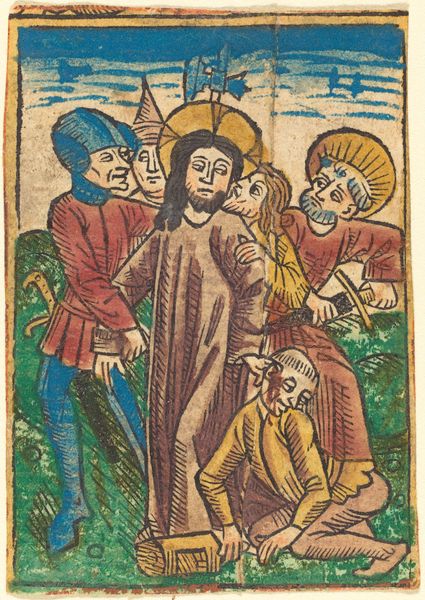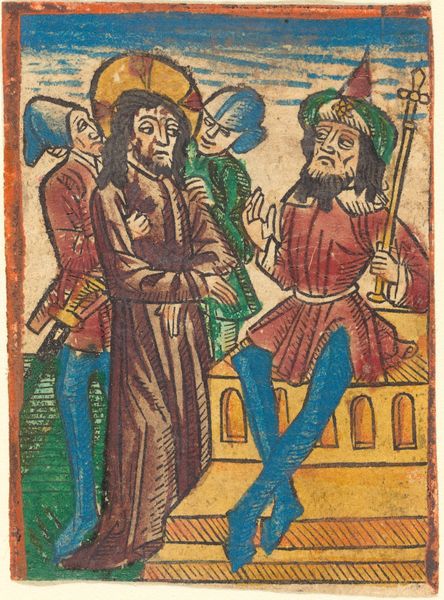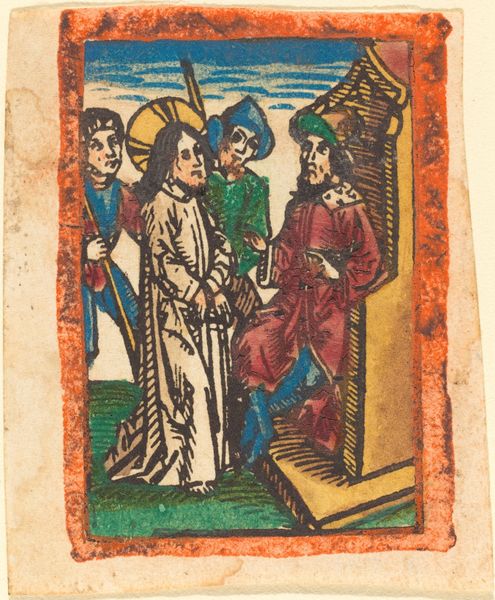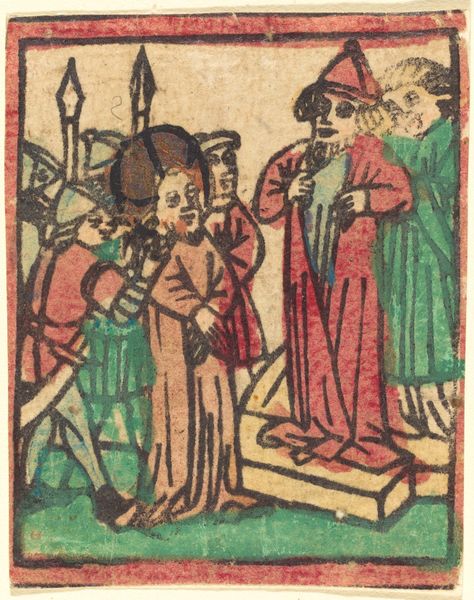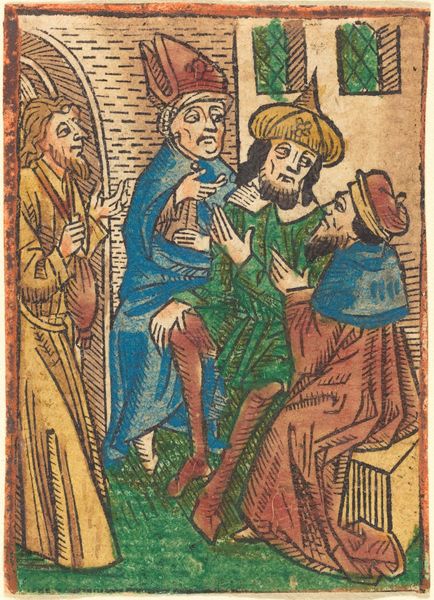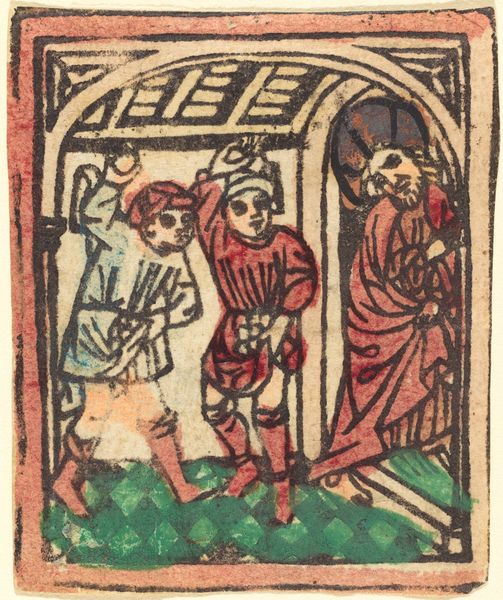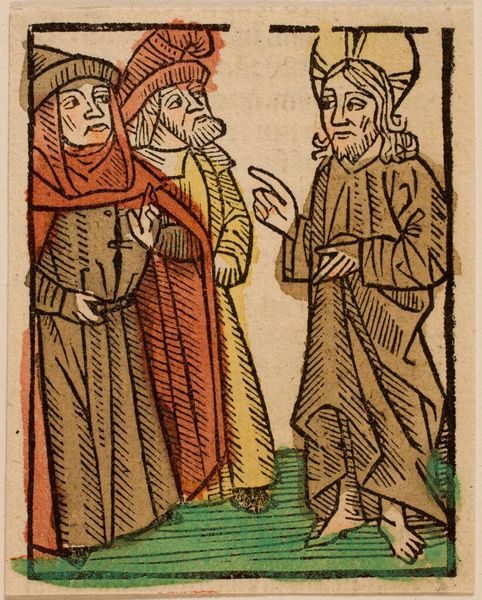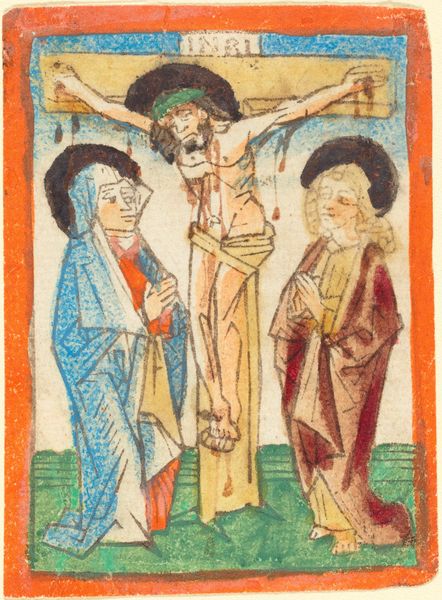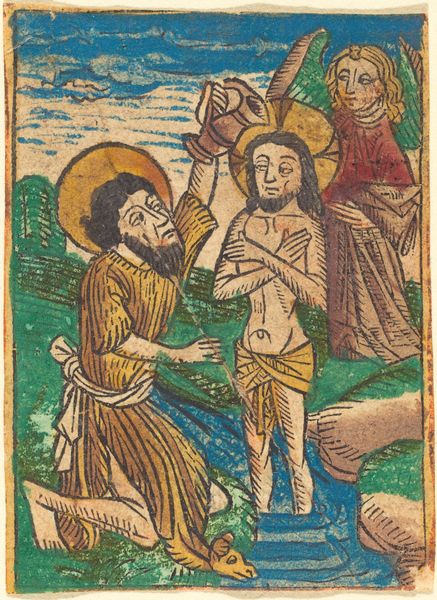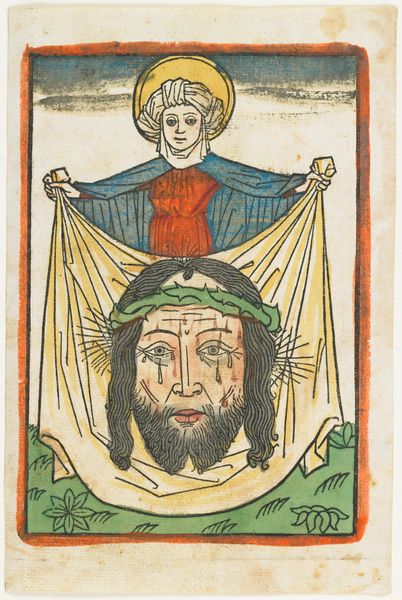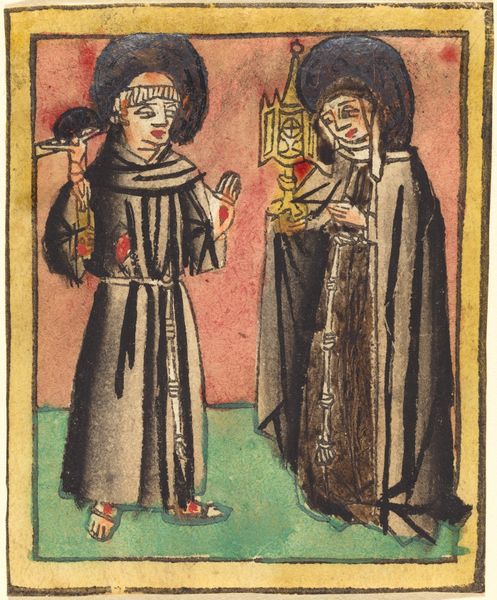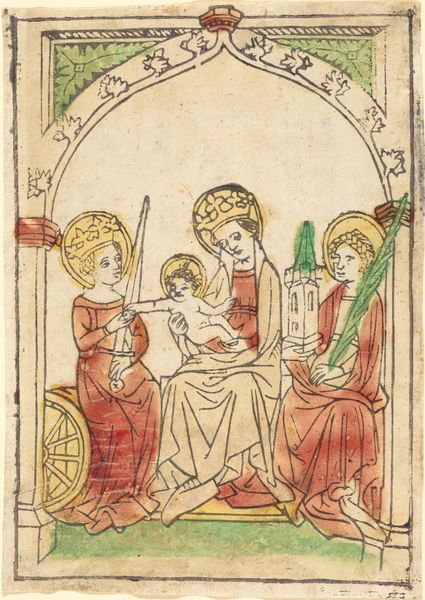
coloured-pencil, print
#
coloured-pencil
#
narrative-art
# print
#
figuration
#
coloured pencil
#
history-painting
#
italian-renaissance
Copyright: National Gallery of Art: CC0 1.0
Curator: My first thought is how tender this piece is. Something about the pastel colors in such a monumental event. Like a dream almost. Editor: I agree, there is a delicate quality. This print, created with colored pencil, is titled "The Marriage of the Virgin" dating back to somewhere between 1480 and 1490, situated within the Italian Renaissance. And your comment about a dream touches upon a common theme from the period of idealizing the biblical figures portrayed in this work. Curator: Oh, idealizing indeed! Joseph's got such a sweet little sprig, the symbol of his worthiness to marry Mary. Makes me wonder if he showed up to the wedding super nervous, clutching that little plant! Editor: Absolutely. And the patriarchal implications are so explicit— the performative expectations of masculinity reflected in artistic form. And this act of “worthiness” reduces the voice of the woman, as the figure of the virgin is exchanged to an arranged marriage and her lack of agency within the religious order. It’s quite layered once we delve in! Curator: Layered indeed. And all those clean lines, even with the muted colors—makes it look almost like stained glass but accessible enough to touch, in a way that actual stained glass never could be. I can imagine how something like this could move you...how it was perhaps intended to move you back then. Editor: Yes, consider the role that materiality played in fostering devotional practices! I see these early prints as attempts to democratize art and make religious iconography more available and easily distributed in domestic settings. These prints could act as teaching aids or simply bring faith into homes with less of a divide between the clergy and lay believers. Curator: It is accessible—something that makes it all the more precious to hold in one’s hands, connecting you to the Renaissance period. It brings such a beautiful, small domestic scene of a woman's marriage that has evolved into something far more extensive in religious contexts. It makes you contemplate not only the sacred scene but what it represents and evolved into over time. Editor: Exactly! It serves as a visual testament of how far back these stories extend and it becomes a critical reflection to deconstruct the roots and social constructs embedded in our understanding and how that evolves throughout society. It becomes so multi-dimensional for our present world.
Comments
No comments
Be the first to comment and join the conversation on the ultimate creative platform.
